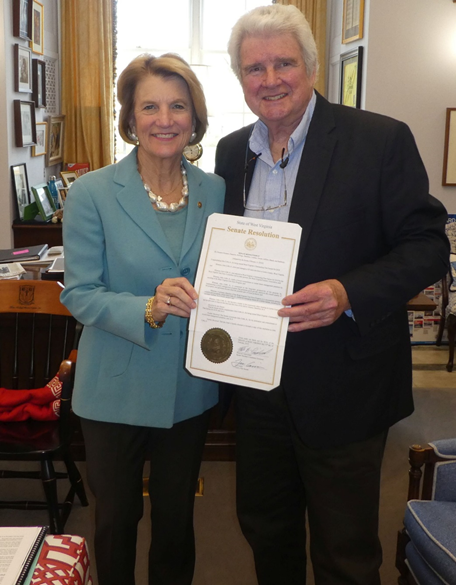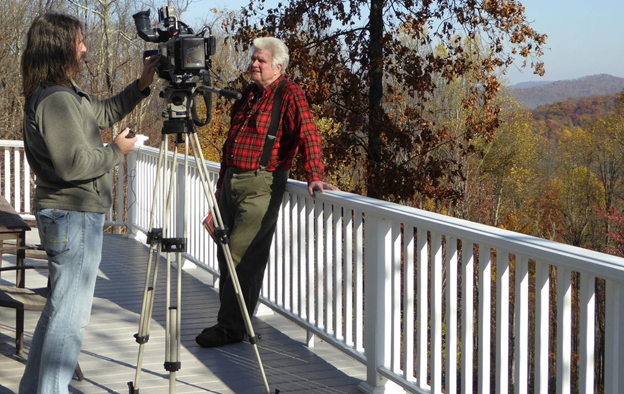Just as parents influence their children, landowners influence how well their woodlands grow. Unlike parents, private landowners can call in West Virginia service foresters to evaluate their woods, identify what the landowners want from their forests, and come up with a management plan to achieve it.
“All non-industrial private woodland owners in West Virginia can use our services,” said Assistant State Forester Charles Copeland, Jr., WVDOF Landowner Assistance program.
The West Virginia Division of Forestry (WVDOF) Landowner’s Assistance program services include:
- Forest Management Plan preparation
- Timber sale assistance
- Insect and disease inspections
- Financial assistance program guidance
All services provided by WVDOF are free of charge to landowners. Some properties in the state have used Forestry’s Landowner Assistance services over several generations of the same family.
The service foresters all hold an associate degree or bachelor’s degree in forestry. WVDOF also requires they attend 10 hours of continuing credits each year.
John Cobb’s career thrived in big city, big business environments. At 25, he was general manager of four divisions of Bell and Howell Company. He became senior vice president for CBS in New York City. By the time he retired, he had achieved the post of senior vice president for McGraw Hill Publishing Company in Washington, D.C.
In 2006, he bought 197 acres in Ireland in Lewis and Braxton Counties. Uninhabited for decades, the forest was overrun with invasive plants displacing the native vegetation. The unbroken tree canopy discouraged many types of wildlife from living there.
Cobb’s initial goals were to carve a driveway through the forest and build a house atop the mountain. A keen hunter, he also wanted to attract more wildlife.
In 2009, Cobb hired a private forester to assess his property. Among the forester’s recommendations was to contact WVDOF to develop a Forest Stewardship Management Plan. The plan helps landowners pinpoint their goals — such as better timber, wildlife habitat, or other benefits—assess the current condition of their forests and recommend actions to achieve those goals. The plan must be written by a Stewardship certified forester or technician. Eligible landowners can receive up to 75% of the cost of developing the plan.
Cobb and WVDOF Assistant State Forester Travis Miller worked together on the Stewardship Plan from 2009 to 2015. The plan continued to evolve as Cobb increased his initial 197 acres to 365 contiguous acres, including four waterfalls. All except 20 acres operate as a tree farm.
The Stewardship Plan was amended to reflect Cobb’s developing priorities:
- Wildlife protection
- Recreation
- Soil conservation
- Water quality
- Timber quality
The plan divided Cobb’s property into 11 stands. The types and density of the trees predominant in each area affect how that stand is managed. Cobb removed choking grapevines, holly thickets, and created wildlife clearings to attract more deer, turkey, grouse, and birds. Timber is cut in selected areas not only to generate revenue, but to improve habitat.
While visiting the U.S. Department of Agriculture (USDA) office to get aerial pictures of his property, Cobb learned that the USDA, through the Natural Resources Conservation Service, offers a program to reimburse landowners for making conservation improvements to their properties. The program has the landowner coordinate with an agency forester or biologist to draw up a work plan to remove grapevines, fight invasive plants, or other efforts to improve habitat. The landowner signs a contract to do the work or have it done. When the work is complete and confirmed by officials, the landowner receives payment.
The WVDOF Forest Stewardship Plan made several recommendations that qualified for Natural Resources Conservation Service programs.

Cobb set a high priority on creating habitat for cerulean warblers, small migratory songbirds. The sky-blue birds winter in South American forests and travel to the southeastern United States in the spring. The warblers live high in tree canopies, nest among tall hardwoods, and forage near small clearings. Since 1966, the world population of cerulean warblers has plunged by 70%. Cobb got approval on contracts to cut selected timber in support of the Cerulean Warbler Appalachian Forestland Enhancement Project. Through carefully planned tree cuttings on two tracts of land, Cobb provided the cerulean warblers with prime habitat.
The improvement was measurable. Before the selective cuts, West Virginia University biology students found only one cerulean warbler family on the property. After the cutting, the students detected eight.
Since 2014, Cobb completed 11 Natural Resources Conservation Service projects:
- $6,205 Invasive species culling program on seven acres
- $1,945 Grapevine culling 20 acres
- $7,906 10-acre clear cut for wildlife
- $645 Second grapevine cut 14 acres
- $1,205 New field creation with five clovers Birds Foot Trefoil
- $760 Back cuts to two fields for wildlife
- $672 Hardwood tree planting/208 trees planted in tubes
- $1,810 Habitat enhancement for the Cerulean Warbler
- $2,584 Culling invasive American Holly on 28 acres
- $1,255 Third grapevine culling 20 acres
- $504 two acre invasive species control autumn olive
The land is now home to a diverse array of tree species, including white oak, red oak, tulip poplar, sycamore, black cherry, black walnut, American chestnut, butternut, sugar maple, and more.
“It was easier because WVDOF Forester Travis Miller is good at what he does. WVDOF has provided ongoing support since 2009,” Cobb said. “I learned invaluable technical and financial assistance information.”
Cobb isn’t done yet.
He has helped connect several neighboring landowners with WVDOF for information on technical and financial assistance to improve their farms and reach their property goals.
He has helped other landowners to join the Cerulean Warbler Appalachian Forestland Enhancement Project.
He has signed a new contract with USDA for planting 375 trees, 100 American chestnuts, and 275 sawtooth oaks.
Named West Virginia’s Tree Farmer of the Year in 2019, Cobb works to encourage other landowners to become certified tree farmers. He now serves on the West Virginia Tree Farm Committee.
Cobb believes in landowners taking an active role in managing and improving their forests. It is not only a good idea, but it is becoming a growing necessity.
“Our forests now live in a different world than the woods your granddad grew up with,” he said. “Forests today are under attack by invasive plants, insects, and diseases. The West Virginia Division of Forestry Landowner Assistance program can help landowners find out what we as landowners can do to protect, sustain, and grow our healthy forests.”
Getting started is as simple as a phone call.
“Landowners can call their local WVDOF office to set up an appointment for a forester to come out and look at the property with them,” said Cobb. “We want to get more West Virginia landowners involved in working with us to improve the quality of their forests.”
“And,” Cobb added, “one of my neighbors Kevin Gregory a retired Army Colonel read one of my articles in the Braxton Citizens’ News and has started a business to preform much of the USDA NRCS financial assistance projects for folks that can’t do the work themselves. Kevin’s Business is Eagle Land Transformations, and his card reads for, excavation, wildlife habitat management, and land clearing. You can reach Kevin, on his cell at 1-580-284-1564. Also, both Johnny and Andy know of Kevin’s work.”
For further assistance, contact the Service Forester for your county using the West Virginia Division of Forestry website https://wvforestry.com. Federal assistance is available by contacting USDA Service Centers for both the Farm Service Agency and the Natural Resources Conservation Service using https://offices.sc.egov.usda.gov/locator/app.

















